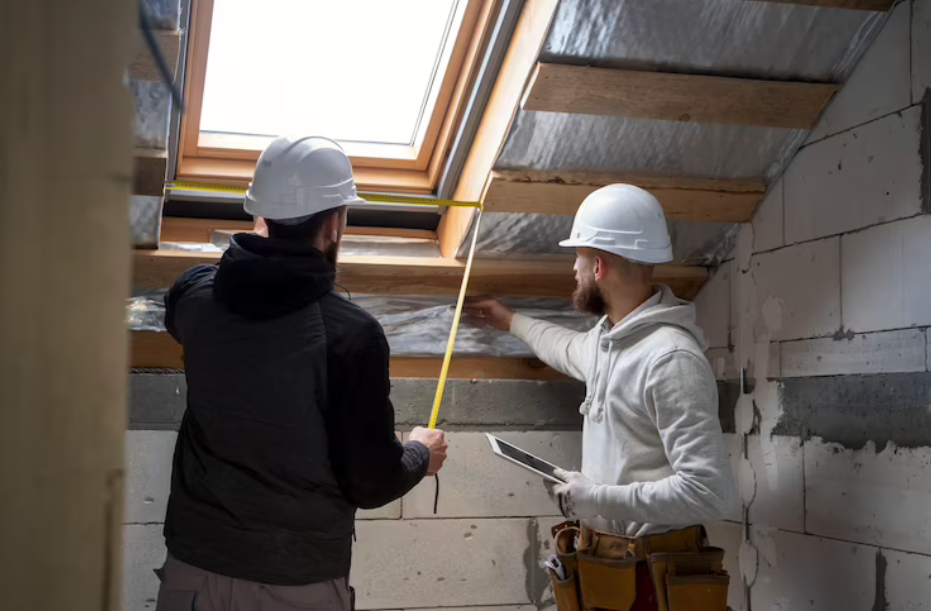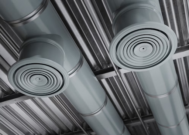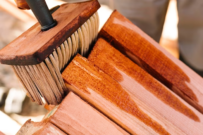The Ultimate Guide to Home Insulation


Brian Jeffries
Brian Jeffries, a seasoned BPA Advisor. Brian is dedicated to sharing his wealth of knowledge on construction projects and materials. With a focus on architecture and building envelopes, Brian contributes valuable insights that shape the discourse around innovative construction practices and materials.
When it comes to creating a comfortable and energy-efficient home, insulation plays a pivotal role. Proper insulation helps regulate indoor temperatures, reduces energy consumption, and enhances overall comfort. In this comprehensive guide, we'll explore various aspects of home insulation, including the best types of insulation for different areas of your home and key considerations for maximizing its effectiveness.
Why Home Insulation Matters
Before delving into the types of insulation, it's crucial to understand why insulation is so essential for your home:
1. Energy Efficiency
Insulation acts as a barrier that helps retain heat during the winter and keeps your home cooler in the summer. This means less reliance on heating and cooling systems, leading to lower energy bills.
2. Comfort
Insulation not only regulates temperature but also reduces drafts and noise transmission, creating a more comfortable living environment.
3. Moisture Control
Proper insulation can prevent moisture buildup and mold growth, safeguarding your home's structural integrity and indoor air quality.
4. Environmental Impact
Reducing energy consumption through insulation helps decrease your carbon footprint, contributing to a more sustainable living space.
Types of Home Insulation
There are various types of insulation available, each with its own set of characteristics and applications. Let's explore some of the most commonly used insulation materials:
1. Fiberglass Insulation
Fiberglass insulation is one of the most popular choices for insulating homes. It consists of tiny glass fibers and is known for its affordability and versatility. Fiberglass insulation is available in batts, rolls, and loose-fill forms. It's commonly used in walls, attics, and crawl spaces.
Pros:
- Cost-effective
- Effective thermal performance
- Resistant to fire
Cons:
- Can be irritating to the skin and respiratory system during installation
2. Cellulose Insulation
Cellulose insulation is made from recycled paper products, treated with fire retardants. It's an eco-friendly choice known for its excellent thermal performance. Cellulose insulation is often blown into attics and wall cavities.
Pros:
- Environmentally friendly
- Good fire resistance
- Effective at reducing air infiltration
Cons:
- Prone to settling over time
3. Spray Foam Insulation
Spray foam insulation is an excellent choice for sealing gaps and achieving high R-values. It's available in two main types: open-cell and closed-cell. Closed-cell spray foam is ideal for metal buildings due to its durability and moisture resistance.
Pros:
- Superior insulation and air-sealing properties
- High R-values
- Excellent moisture barrier
Cons:
- Higher initial cost
4. Rigid Foam Board Insulation
Rigid foam board insulation, such as EPS (Expanded Polystyrene) and XPS (Extruded Polystyrene), offers high thermal resistance. EPS is often used as insulation for exterior walls, while XPS is suitable for below-grade applications.
Pros:
- High R-values
- Moisture-resistant (XPS)
- Suitable for exterior wall insulation (EPS)
Cons:
- Higher cost compared to fiberglass
5. Mineral Wool Insulation
Mineral wool insulation is made from rock or slag, offering excellent fire resistance and soundproofing properties. It comes in batts or loose-fill forms and is suitable for various applications.
Pros:
- Fire-resistant
- Excellent soundproofing
- Resistant to pests and mold
Cons:
- Slightly more expensive than fiberglass
Choosing the Right Insulation for Specific Areas
The effectiveness of insulation largely depends on where it's installed. Here are some recommendations for selecting the best insulation for specific areas of your home:
Exterior Walls
When deciding the best insulation for exterior walls, the choice often comes down to fiberglass or rigid foam board insulation, such as EPS or XPS. EPS is a popular option due to its affordability and ease of installation. XPS is ideal for areas prone to moisture, such as basements.
Attics
For attic insulation, consider blown-in cellulose or fiberglass insulation. These materials are effective at filling gaps and providing adequate thermal resistance. You can also use spray foam insulation for sealing any air leaks in the attic.
Basement Walls
Basements can be prone to moisture issues, so it's crucial to choose insulation that also acts as a moisture barrier. Closed-cell spray foam insulation is an excellent choice for basement walls. It not only insulates but also forms a moisture-resistant seal.
Metal Buildings
It’s recommended to use closed-cell spray foam insulation for metal buildings. It provides superior insulation, acts as an effective moisture barrier, and helps prevent condensation within the building.
Moisture Barrier for Basement Walls
Moisture control is a critical aspect of basement insulation. To ensure you get the best moisture barrier for basement walls, consider the following steps:
Interior Drainage Systems
Install interior drainage systems, such as French drains, to divert water away from the foundation.
Exterior Waterproofing
Apply waterproofing coatings or membranes on the exterior walls to prevent water intrusion.
Vapor Barrier
Install a vapor barrier on the interior basement walls before adding insulation. This barrier prevents moisture from seeping through the walls and into the living space.
Proper Insulation
Choose insulation materials that are resistant to moisture, such as closed-cell spray foam or foam board insulation.
Adequate Ventilation
Ensure proper ventilation in your basement to reduce humidity levels and improve air circulation.
EPS vs. XPS
EPS (Expanded Polystyrene) and XPS (Extruded Polystyrene) are both excellent choices for insulation, but they have some differences worth noting:
EPS (Expanded Polystyrene)
- Made from expanded polystyrene beads.
- Generally less expensive than XPS.
- Offers good thermal resistance.
- May have lower moisture resistance compared to XPS.
XPS (Extruded Polystyrene)
- Made from extruded polystyrene material.
- Offers higher moisture resistance.
- Slightly more expensive than EPS.
- Excellent thermal resistance.
The choice between EPS vs XPS often depends on your specific needs and budget. For areas where moisture is a concern, such as basement walls, XPS is a preferred choice due to its superior moisture resistance.
In conclusion, home insulation is a fundamental aspect of creating a comfortable and energy-efficient living space. By choosing the right insulation materials and installing them correctly, you can improve energy efficiency, enhance comfort, and protect your home from moisture-related issues. Whether you're insulating your attic, exterior walls, or basement, the right insulation can make a significant difference in your home's overall performance and your energy bills.
Get Smarter About Building Products
Join 50,000+ subscribers and get our 3 min daily newsletter on what matters in the building materials industry.
You might like this


Solving Ventilation Challenges: Metal Deck Profiles and Back Draft Dampers as Key Solutions
When it comes to building design and construction, ventilation is a critical factor that often presents significant challenges. Proper ventilation is essential for maintaining indoor air quality, controlling temperature, and ensuring occupant comfort and safety. In this article, we will explore how metal deck profiles and back draft dampers are key solutions for addressing ventilation […]


The Best Hidden Deck Fasteners: Concealed Elegance and Lasting Stability
Decks, those quintessential outdoor havens, serve as extensions of our living spaces, inviting us to bask in the open air. But what if we could take this experience to the next level? Enter concealed deck fasteners, the unsung heroes that elevate your deck’s appearance and structural integrity, all while keeping their existence a secret. In […]


Decking Done Right: Building the Ultimate Deck with Expert Tips
Building a deck is a wonderful way to extend your living space and create an inviting outdoor oasis. However, constructing the ultimate deck requires careful planning, attention to detail, and the use of superior materials. In this article, we will explore expert tips for deck railing, waterproofing underneath the deck, the benefits of polyurethane for […]